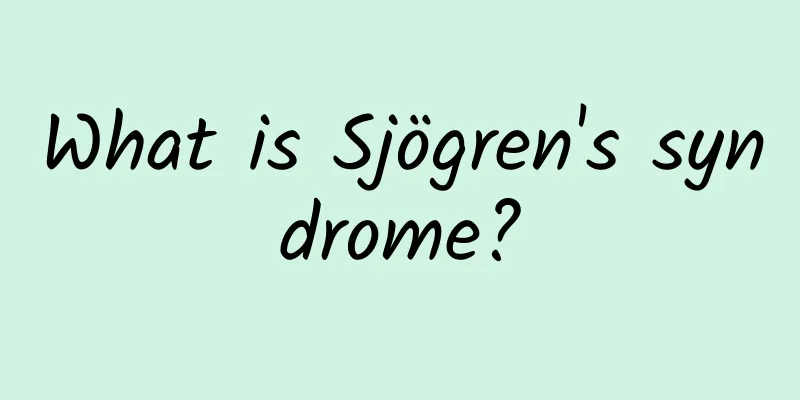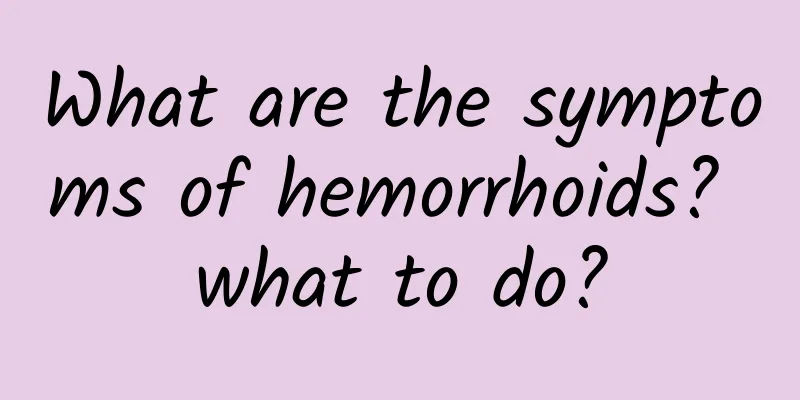What is the last tooth to grow called?

|
The last teeth to grow are called wisdom teeth. However, as the last teeth, the growth period of wisdom teeth is affected by many factors. Some people may never grow wisdom teeth in their entire lives, but some people may grow wisdom teeth when they are in their teens. The growth time of wisdom teeth is different, and the impact on each person is also different. Some people need to have their wisdom teeth extracted because they grow crooked. Wisdom tooth refers to the third molar on the innermost alveolar bone in the human mouth, which is exactly the eighth tooth counting from the central incisor. Because it erupts very late, generally between the ages of 16 and 25, when a person's physical and psychological development are close to maturity, it symbolizes the "arrival of wisdom" and is therefore commonly called "wisdom tooth." There are great differences between individuals in the growth of wisdom teeth. Normally, there should be four teeth that are symmetrical in the upper and lower left and right directions. Some people have less than four or even none, and very few people have more than four. The age difference of eruption is also very large. For some people, it erupts before the age of 20, some people erupt at the age of 40 or 50, or never erupt in their lifetime. This is all normal. Abnormalities and suggestions Modern medicine generally believes that wisdom teeth are remnants of human evolution. Since wisdom teeth grow at the end of the alveolar bone, the alveolar bone of modern humans has degenerated to varying degrees in length, width, and strength due to increasingly refined eating habits, resulting in it being unable to provide sufficient space for the eruption of wisdom teeth. As a result, wisdom teeth often erupt ectopically or are impacted due to lack of space. In addition, the degeneration of the wisdom teeth themselves can also lead to insufficient number of erupted teeth and asymmetric eruption. These eruption abnormalities, coupled with the difficulty in cleaning and prevention, usually manifest clinically as pericoronitis of wisdom teeth, caries of wisdom teeth or adjacent teeth, periodontitis, pulpitis and other diseases, causing severe pain. Therefore, it is recommended to preventively extract abnormal or asymmetrically erupted wisdom teeth as early as possible. One wisdom tooth brings 5 diseases ! Dental caries Impacted or misplaced wisdom teeth can easily cause food debris to become stuck in the periodontal and interdental spaces between the second molars and wisdom teeth, making them difficult to remove and often leading to tooth decay. Malalignment of teeth The driving force of the eruption of wisdom teeth is often one of the main causes of crowded and uneven teeth. Wisdom tooth pericoronitis When wisdom teeth are impacted, they can erupt in different directions such as vertical, anterior, horizontal, transverse, and inverted. When it is partially erupted, the crown of the tooth is often covered to varying degrees by gingival tissue, so that a gingival pocket is formed between the crown and the gums. Since food residues and bacteria can easily hide in this pocket, inflammation will occur when the gum pocket is traumatized or the body's resistance is reduced. Oral mucosal diseases Gingiva and buccal mucosa of impacted and misplaced wisdom teeth. Long-term mechanical stimulation of the edge of the crown or repeated bites may cause pathological damage to the mucosa such as ulcers, erosions, abnormal tissue proliferation, and white spots. The long-term process of initial repair and re-trauma will affect the normal keratinization of the oral mucosal epithelium and cause precancerous lesions, which in turn induce oral mucosal carcinogenesis. Craniomandibular disorders The impaction or dislocation of mandibular wisdom teeth often causes occlusal interference with the maxillary second molars and leads to pathological retraction of the mandible, which is one of the causes of craniomandibular disorders. The main clinical manifestations are clicking, pain and abnormal mandibular movement in the temporomandibular joint, pain in the masticatory muscles, tinnitus, tongue pain and other symptoms. If your wisdom teeth are in the following situations, remove them immediately! Incompletely erupted wisdom teeth Incompletely erupted wisdom teeth can easily cause periodontal inflammation. It is recommended to remove them. It is better to suffer a short pain than a long one! However, after the extraction, the air should be cleaned properly and some disinfectant mouthwash should be used. Wisdom teeth with caries If wisdom teeth are decayed, except for very simple cavities that are not deep on the biting surface, they can be filled. For those tooth decays on the adjacent surfaces, which require very good technology, and those with very deep decay or even root canal treatment, it is recommended to extract them to prevent future troubles. Anteriorly tilted impacted wisdom teeth That is, the wisdom tooth is at an angle of about 45 degrees to the second molar. If this type of wisdom tooth is not extracted, it is easy to cause lesions in the adjacent teeth. In severe cases, the wisdom tooth and the second molar need to be extracted, which will seriously affect our chewing function. Tightly aligned wisdom teeth If the wisdom teeth do not have enough space to grow and are too closely aligned with other teeth, more serious symptoms such as swollen gums and tooth pain may occur. To avoid this from happening again, it is recommended to remove it as soon as possible after the inflammation subsides. Wisdom teeth that are difficult to clean Since wisdom teeth grow at the innermost part, they are more difficult to clean. Therefore, even wisdom teeth that grow in the right position are prone to tooth decay. To avoid affecting other teeth, it is recommended to remove wisdom teeth as early as possible. No opposing wisdom teeth If there is no opposing wisdom tooth to bite against, the over-eruption of the wisdom tooth will affect the bite and cause swelling and pain in the gums on the opposite side. And over time, it may also cause uneven face. Note: In addition to the above 6 types, in some special cases, the dentist may also recommend that you remove wisdom teeth, such as orthodontic needs. It is best to go to the hospital for professional evaluation before deciding whether to remove the tooth, rather than using the presence of current symptoms as the sole criterion. |
<<: What fruits can be eaten with long water beans
>>: The efficacy and function of bull testicles
Recommend
Heart rate calculation for patients with atrial fibrillation
There are many patients with atrial fibrillation ...
Is nebulization effective for pharyngitis?
Nebulizer treatment for pharyngitis is definitely...
Will mild hypoxic encephalopathy in newborns heal on its own?
For newborns, if hypoxic encephalopathy occurs du...
Do you know how chickenpox is transmitted?
Chickenpox is highly contagious and anyone who co...
What is the reason for light menstruation and delayed menstruation?
Many women in life will experience irregular mens...
What foods should not be eaten when suffering from myocardial ischemia?
Myocardial ischemia is a disease with a relativel...
Is ichthyosis contagious?
Ichthyosis is a very common skin disease. This di...
How to determine bone closure?
People with tall stature generally have an enviab...
What are the benefits of taking vitamin B for girls?
Vitamin B has many benefits to the human body and...
The role and efficacy of Phellodendron bark
People don’t know much about medicinal materials....
Pain in the back of the thigh below the buttocks
After we exercise or when we accidentally get inj...
Is it good to have eight-character wrinkles between the eyebrows?
If there are s-shaped wrinkles between the eyebro...
What to do if your vagina is itchy
Many women wash their genitals every two or three...
No medicine or injections required, just rely on the acupressure mat. Does it really have the effect of curing diseases?
Many of our friends like to watch variety shows i...
Is Huaqingdan a regular medicine?
Many female friends will have gynecological disea...









